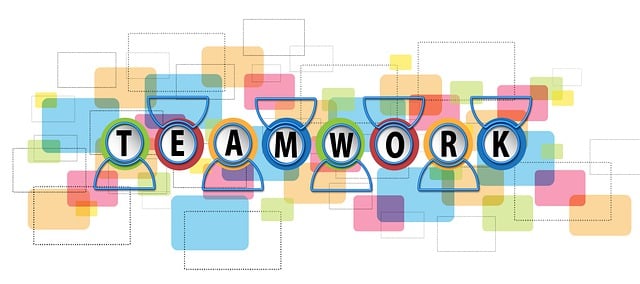5S training, rooted in Japanese manufacturing, is a powerful lean management strategy for optimizing workflows and enhancing efficiency. This method comprises five disciplines: Sort, Set in Order, Shine (Clean), Standardize, and Sustain. By implementing 5S, businesses transform their spaces into organized, standardized processes, eliminating waste and promoting continuous improvement. Process standardization, a key aspect, involves defining step-by-step procedures for routine tasks to ensure consistency and reduce errors. This fosters a culture of continuous improvement, enhancing productivity, employee morale, and overall workplace organization.
Systematic workflow improvement is the key to enhancing operational efficiency and fostering a productive work environment. This comprehensive guide explores powerful strategies, with a focus on 5S training, Lean management principles, and workplace organization techniques. Discover how these methods optimize processes, promote consistency through process standardization, and drive continuous improvement for long-term success. Implement these practices to transform your workspace into a well-oiled machine.
- Understanding the Foundation: 5S Training and Its Role in Workflow Improvement
- Lean Management Principles: Optimizing Processes for Efficiency
- Workplace Organization Strategies: Creating a Structured Environment
- Implementing Continuous Improvement with 5S: A Long-Term Approach
- Process Standardization: Ensuring Consistency and Quality Control
Understanding the Foundation: 5S Training and Its Role in Workflow Improvement

Understanding the Foundation: 5S Training and Its Role in Workflow Improvement
In today’s competitive business landscape, efficient workflow improvement is crucial for enhancing productivity, reducing waste, and fostering a lean management culture. One powerful tool that has gained significant traction in this regard is 5S training. Rooted in Japanese manufacturing principles, 5S is an acronym for five disciplines: Sort, Set in Order, Shine (or Clean), Standardize, and Sustain. These practices collectively drive workplace organization by promoting process standardization and continuous improvement.
By implementing 5S training, organizations can systematically transform their work environments into organized, streamlined processes. This involves sorting through unnecessary items, establishing clear workflows, and regularly maintaining a clean and orderly workspace. The result is not only an aesthetically pleasing environment but also a more efficient, effective operational setup. Moreover, continuous improvement is embedded in the 5S methodology, encouraging regular reviews and adjustments to ensure ongoing optimization of the workplace and processes, thus fostering a culture of excellence.
Lean Management Principles: Optimizing Processes for Efficiency

Lean Management principles focus on optimizing processes to eliminate waste and improve efficiency. At the heart of lean management is the 5S training methodology, which involves sorting, setting in order, shining (cleaning), standardizing, and sustaining. Implementing 5S continuous improvement practices leads to a more organized and streamlined workplace organization. By fostering a culture of process standardization, organizations can achieve significant gains in productivity without compromising quality or increasing costs.
This systematic workflow improvement approach emphasizes the elimination of non-value-added activities, such as excessive inventory, unnecessary motion, and defects. It encourages employees at all levels to participate in identifying inefficiencies and proposing solutions. Process standardization ensures that tasks are performed consistently, leading to higher quality outputs and minimizing errors. In today’s competitive business environment, adopting lean management practices is crucial for staying agile, responsive, and ahead of the curve.
Workplace Organization Strategies: Creating a Structured Environment

In today’s fast-paced business environment, efficient workplace organization is a cornerstone of successful operations. Implementing strategies that promote structure and order can significantly enhance productivity and employee morale. One proven method is adopting 5S training principles, which form the backbone of lean management. This approach involves sorting (removing unnecessary items), setting in order (arranging tools and equipment logically), shining (cleaning to maintain order), standardizing processes, and sustaining (continuously improving and maintaining the system). By instilling these practices, organizations can create a highly organized environment that streamlines workflows, reduces waste, and fosters a culture of continuous improvement.
Process standardization is another key aspect of workplace organization. It involves defining and documenting step-by-step procedures for routine tasks, ensuring consistency and minimizing errors. This method not only improves efficiency but also empowers employees by providing clear guidelines. When processes are well-defined, it becomes easier to identify inefficiencies and implement targeted improvements using techniques like 5S continuous improvement initiatives. Such structured approaches contribute to a dynamic work environment where every aspect is optimized for maximum productivity and employee satisfaction.
Implementing Continuous Improvement with 5S: A Long-Term Approach

Implementing Continuous Improvement with 5S is a strategic, long-term approach that transforms workplaces and fosters a culture of efficiency. This method, rooted in lean management principles, focuses on workplace organization through five key elements: Sort, Set in Order, Shine, Standardize, and Sustain. By integrating 5S training into operations, organizations can achieve significant process standardization and streamline workflows.
The continuous nature of 5S encourages regular reviews and adjustments to maintain optimal efficiency. This involves systematically analyzing existing processes, removing waste, and establishing clear standards. As a result, teams experience improved productivity, reduced errors, and enhanced job satisfaction. Moreover, 5S promotes a collaborative environment where every employee contributes to the overall workplace organization and continuous improvement.
Process Standardization: Ensuring Consistency and Quality Control

Process Standardization plays a pivotal role in ensuring consistent quality and efficiency across all operations within an organization. By implementing 5S training—a fundamental concept in lean management—businesses can systematically organize their workplace, eliminating waste and streamlining processes. This involves sorting items, setting in order, shining a light on the workspace, standardizing procedures, and sustaining the improvement.
Adopting 5S continuous improvement methodologies fosters an environment of disciplined productivity. It encourages employees to be active participants in identifying inefficiencies and implementing solutions that align with workplace organization best practices. Ultimately, process standardization not only enhances operational excellence but also contributes to a culture of quality control, driving businesses towards sustained success.
Systematic workflow improvement is a multifaceted approach that leverages tools like 5S training, lean management principles, and workplace organization strategies. By creating a structured environment, implementing continuous 5S improvements, and focusing on process standardization, organizations can achieve efficiency, consistency, and quality control. Adopting these strategies not only enhances productivity but also fosters a culture of continuous learning and enhancement, ensuring businesses remain competitive in today’s dynamic market.
